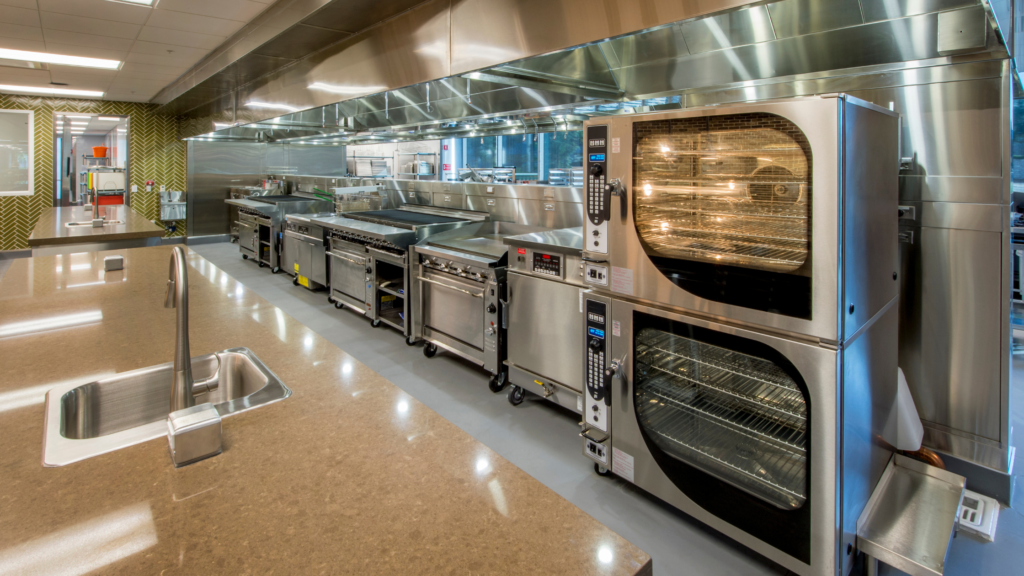In the fast-paced world of the culinary industry, technological advancements have significantly transformed the landscape of commercial kitchens. From traditional stovetops and ovens to state-of-the-art equipment driven by cutting-edge technology, the evolution has been nothing short of revolutionary. This article explores the profound impact of technology on commercial kitchen equipment, examining the benefits and challenges that come with these innovations.
Efficiency and Productivity:
One of the most noticeable impacts of technology on commercial kitchen equipment is the enhanced efficiency and productivity it brings to the culinary environment. Modern appliances are equipped with advanced features such as programmable settings, automation, and smart controls, streamlining cooking processes and minimizing the margin for error. This not only accelerates food preparation but also ensures consistency in quality, a crucial aspect in the competitive restaurant industry.
For instance, commercial ovens with precision temperature control and automated timers allow chefs to focus on other tasks while ensuring that dishes are cooked to perfection. Similarly, high-speed blenders and food processors equipped with powerful motors significantly reduce preparation time, enabling kitchens to handle larger volumes of orders efficiently.
Energy Efficiency and Sustainability:
As the world grapples with environmental concerns, technology has played a pivotal role in making commercial kitchens more energy-efficient and environmentally friendly. Energy-efficient appliances, such as induction cooktops and convection ovens, consume less power while delivering optimal performance. This not only reduces operational costs but also aligns with the growing demand for sustainable practices in the food industry.
Furthermore, the integration of smart sensors in kitchen equipment allows for better monitoring and control of energy consumption. Chefs and kitchen managers can analyze data to identify areas of improvement, promoting a culture of sustainability within the culinary workspace.
Remote Monitoring and Maintenance:
Advancements in connectivity have introduced the concept of smart kitchens, where commercial kitchen equipment can be remotely monitored and controlled. This technology allows chefs and kitchen managers to keep a close eye on operations even when they are not physically present. Smart ovens, refrigerators, and even coffee machines can be connected to a centralized system, providing real-time data on performance, temperature, and maintenance needs.
Remote monitoring not only enhances operational efficiency but also enables predictive maintenance. Kitchen equipment can be equipped with sensors that detect potential issues before they escalate into major problems, reducing downtime and preventing costly repairs. This proactive approach to maintenance is a game-changer for commercial kitchens striving for uninterrupted service.

Menu Innovation and Culinary Creativity:
Technology has opened up new avenues for culinary creativity and menu innovation in commercial kitchens. Advanced cooking techniques, such as sous vide and molecular gastronomy, have become more accessible due to precision equipment and temperature control devices. Chefs can experiment with textures, flavors, and presentations, pushing the boundaries of traditional cooking.
Moreover, the integration of kitchen management software and inventory tracking systems allows chefs to optimize menu offerings based on real-time data. This data-driven approach enables businesses to identify popular dishes, manage inventory more efficiently, and adapt their menus to changing consumer preferences. The result is a dynamic culinary landscape that caters to evolving tastes and trends.
Challenges and Considerations:
While the impact of technology on commercial kitchen equipment is overwhelmingly positive, there are challenges that come with these advancements. The initial cost of acquiring high-tech equipment can be a barrier for small businesses, posing a potential divide between establishments with the financial means to invest in the latest technology and those that cannot.
Additionally, the rapid pace of technological evolution may lead to concerns about equipment obsolescence. Restaurant owners and chefs must carefully assess the long-term viability of their investments to avoid being left with outdated and unsupported technology.
Furthermore, the integration of technology introduces the need for staff training. As kitchens become more automated and digitized, chefs and kitchen staff need to adapt to new interfaces, controls, and maintenance procedures. Overcoming the learning curve is essential to maximizing the benefits of technology without sacrificing the human touch that is integral to the culinary experience.
The impact of technology on commercial kitchen equipments has been transformative, revolutionizing the way chefs operate and businesses thrive in the competitive food industry. From enhanced efficiency and sustainability to remote monitoring and culinary innovation, the benefits are clear. As technology continues to advance, it is crucial for the culinary world to embrace these changes thoughtfully, considering the challenges and ensuring that the integration of technology aligns with the overarching goals of delivering exceptional culinary experiences. Balancing tradition with innovation, commercial kitchens are poised to embrace a future where technology is not just a tool but an integral part of the culinary journey.
Are there any cybersecurity concerns associated with smart kitchen equipment in commercial settings?
While the article touched upon the benefits of connectivity and remote monitoring in commercial kitchens, it did not delve into the potential cybersecurity challenges that may arise. As kitchens become more digitally connected, there is a need to address concerns related to data security, protecting sensitive information, and safeguarding against potential cyber threats.
How do small businesses in the food industry overcome the financial barriers associated with adopting high-tech kitchen equipment?
The article highlighted the positive impact of technology on commercial kitchens but didn’t extensively cover the financial challenges faced by smaller establishments. Acquiring advanced kitchen equipment can be a substantial investment, and it would be useful to explore strategies and support systems available for small businesses to embrace these technological advancements without straining their budgets.
Is there a risk of technology overshadowing the human touch in culinary experiences?
While technology undoubtedly enhances efficiency, creativity, and innovation in the kitchen, it’s important to consider whether there’s a risk of losing the personal touch and artistry that chefs bring to their creations. This question addresses the potential concerns about the balance between technological advancements and the human element that defines the culinary world.
How do advancements in technology impact the skillset requirements for chefs and kitchen staff?
The article briefly mentioned the need for staff training in the face of technological integration, but it didn’t explore the evolving skillset requirements for chefs and kitchen staff in depth. As kitchens become more automated and digitized, there is a growing need to understand how this impacts the skill profiles sought after in the culinary industry and how professionals can adapt to stay relevant.
What steps can commercial kitchens take to ensure the responsible disposal and recycling of outdated or non-functional technology?
The article touched upon the potential issue of equipment obsolescence, but it didn’t discuss the responsible disposal of technology that reaches the end of its life cycle. Exploring sustainable practices for the disposal and recycling of electronic components in commercial kitchens is crucial in minimizing the environmental impact of rapidly evolving kitchen technology.
